Automotive
The government’s zero-emission vehicles mandate is an arrogant, unnecessary gamble
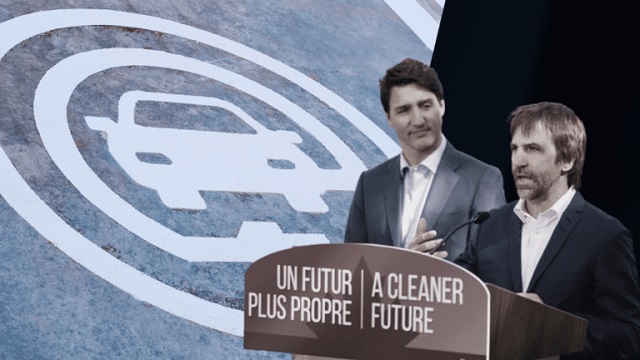
From the MacDonald Laurier Institute
By Jerome Gessaroli
This poor policy will disproportionately hurt middle- and working-class Canadians.
In December 2023, Steven Guilbeault, the federal minister of environment and climate change, announced that all new auto sales in Canada must be zero-emission vehicles by 2035. The Liberal government’s mandate to restructure the auto sector is industrial policy on a massive scale. Whether one agrees or disagrees with the mandate, there is general consensus on the substantial nature of this government intervention.
Many people write about whether wholesale government mandates will benefit or harm Canadians. Pundits of all stripes invoke their favoured political and economic ideologies (whether it is capitalism, command socialism, dirigisme, or economic nationalism) when discussing the government’s actions. When evaluating the efficacy of these government mandates, I will refrain from using polarizing labels and instead apply a first principles approach to assess how successful products, markets and entire industries are created.
To illustrate this approach, I reference a classic essay written in 1958 by Leonard E. Read, “I, Pencil.” In this essay, Read questions whether anyone truly knows how to produce a pencil from scratch, a simple commodity that has been mass-produced for over 300 years.
Read describes a pencil’s components, including wood, lacquer, graphite, a bit of metal, an eraser, and labelling. He delves into the intricacies of each element needed for pencil production. For instance, harvesting wood involves using saws, trucks, railcars, radios, and other equipment. The extensive skills, knowledge, and capital needed to design and manufacture this equipment are immense. Motors, railcars, trucks, and radios all require mining and refining ores, engineering design, manufacturing, distribution, and deployment, just so loggers can do their job.
After the wood arrives at the sawmill, it is cut, machined, and dried. The equipment and expertise needed for this second step are too long to list. Power for the mill and kiln, generated by a hydroelectric dam and transmitted through power lines, requires its own design, construction, and operation—a testament to human ingenuity.
The pencil’s graphite must be mined and imported. Transforming raw graphite into the final pencil material involves mixing it with various compounds at the mine site, moulding, cutting, multiple drying rounds, and quality checks. The graphite then travels to the pencil plant, where it undergoes further mixing, moulding, and cutting and is then placed inside the pencil. Chemists, manufacturing engineers, production workers, millwrights, and truck drivers, not to mention the specialized equipment for graphite manufacturing, all play crucial roles in this intricate process.
The pencil lacquer, made up of various compounds, is applied to the wood, and then the pencil runs through a specialized machine multiple times to get the desired finish. Inputs, including the chemical process, labour, and co-ordination for this procedure are too lengthy to detail. The aluminium band around the pencil serves to secure the eraser.
The eraser must be abrasive enough to remove the graphite from the paper without damaging the paper itself. Over time, chemists have changed the eraser’s composition, using their knowledge of polymers and other chemicals. The intricate production of a simple pencil requires diverse material inputs from various sectors and production processes, all of which must be cost-efficient to keep the pencil’s cost very low.
The collective knowledge, capital, and materials needed to produce a pencil are dispersed among millions of individuals and companies throughout society. No single person, even the CEO of a pencil company, possesses anything but a tiny fraction of the knowledge needed to make a pencil.
Despite this diffusion, spontaneous order emerges, driven by individuals pursuing their own interests, needs, and wants. As Read argues, those involved in the pencil’s production from miners, loggers, and engineers to CEOs, perform their tasks not because they desire a pencil but for other motivations. Instead, each participant exchanges their specific ability for the goods and services they need, with the pencil potentially being one of many items in this exchange.
Creating a zero-emission vehicle sector is vastly more complicated than a pencil. Given this complexity, the feasibility of any single entity, including the government, to successfully direct an auto sector restructuring is doubtful. Sustainably producing zero-emission vehicles instead will require decisions, capital, and resources dispersed throughout society that spontaneously arrange themselves in a manner that responds to the demand for such vehicles.
The federal government has assured Canadians that they will help with this transition, primarily through government subsidies to consumers and businesses. Money is given to subsidize zero-emission vehicle purchases to make them a bit less costly.
A total of $43 billion will be provided by the federal, Ontario and Quebec governments in subsidies for three battery plants, enabling the companies to manufacture batteries profitability. As well, funding is provided for 42,000 electric chargers, which are in addition to the 40 percent of existing chargers that the government has already subsidized to help keep drivers’ vehicles on the road.
The federal government cannot be certain its decisions are correct. It might be better to not subsidize battery plants and instead relax restrictions on supply chain development. This would involve ensuring the supply of critical minerals, chemicals, electrode production, transportation services, testing equipment, recycling, and more.
The government’s approach bypasses the price system and diverts money from its best use. The subsidies are artificial. While companies may initially react to these subsidies, their response is contingent upon the government’s continued support.
Without the millions of people making individual decisions that are spontaneously organized through the price system to create a sustainable zero-emission car market, the federal government’s mandate will likely fail.
It is the height of hubris to assume that the government can restructure the auto industry in such a fundamental way. More likely, the massive subsidies will financially burden Canadians for many years, leading to a disarray of misallocated resources that will take years to correct. Indeed, the Parliamentary Budget Office estimates that the debt charges for the federal and participating provincial governments subsidizing battery manufacturing will increase the total cost by $6.6 billion over 10 years.
This poor policy will disproportionately hurt middle- and working-class Canadians, through lower employment and higher taxes that would otherwise be unnecessary.
Jerome Gessaroli is a senior fellow at the Macdonald-Laurier Institute and leads The Sound Economic Policy Project at the British Columbia Institute of Technology.
Automotive
Tesla Vandals Keep Running Into The Same Problem … Cameras


From the Daily Caller News Foundation
By Hudson Crozier
People damaging Teslas in anger toward their owners and Elon Musk aren’t picking up on the fact that the vehicles have multiple cameras capable of catching them in the act.
At least nine perpetrators have been caught on video keying, writing graffiti or otherwise defacing Tesla vehicles in parking lots across the U.S. in the month of March alone. Most have led to an arrest or warrant based partly on the footage, which Tesla’s “Sentry Mode” automatically films from the side of the unattended vehicle when it detects human activity nearby.
“Smile, you’re on camera,” Tesla warned in a March 20 X post about its Sentry Mode feature. Musk’s company has been working to upgrade Sentry Mode so that the vehicles will soon blast music at full volume when vandals attack it. The camera system, however, has not stopped an increasing number of vandals from singling out Tesla owners, usually in protest of Musk’s work in the Trump administration for the Department of Government Efficiency (DOGE).
One incident happened on March 29, the same day leftists coordinated protests around the country for a “Global Day of Action” against Musk. That Saturday also saw alleged instances of violence at protests. The demonstrations stemmed from an online call to action by groups such as the Disruption Project, which encourages activists to foment “uprisings,” find a “target’s” home address and other confrontational tactics.
Tesla’s press team did not respond to a request for comment.
One man allegedly caught on camera keying a Tesla SUV on March 24 apologized to the owner who confronted him in a parking lot in Pennsylvania, police and media reports said. The man faces charges of criminal mischief, harassment and disorderly conduct for allegedly carving a swastika onto the vehicle.
“I have nothing against your car, and I have nothing against you,” the suspect said while the owner filmed him in the parking lot. “Obviously, I have something against Elon Musk.” The man called his own behavior “misguided.”
The defendant’s lawyer told Fox News his “client is a proud father, long-time resident, and is currently undergoing cancer treatment” and that he would not comment publicly “pending the outcome of the case.”
One of the most aggressive acts caught by Sentry Mode was in the case of a man who drove an ATV-style vehicle into a Tesla on March 25. Texas police identified the man as Demarqeyun Marquize Cox, arrested him and said he allegedly gave two other nearby Teslas the same treatment while also writing “Elon” on them. The public defender office representing Cox did not respond to a voicemail from the Daily Caller News Foundation.
Tesla cameras also caught three other people in Florida, Texas and Arizona keying and smearing bubble gum on the vehicles in March. The three suspects named by police do not have attorneys listed in county records available for contact.
Many of the vandalism cases since Trump’s return have reportedly caused thousands of dollars in damage for individual owners. For example, the bubble gum incident in Florida brought $2,623.66 in costs, while another keying incident in Minnesota brought $3,200.
Some reported attacks on Tesla vehicles and chargers have gotten the attention of federal law enforcement, including cases of alleged firebombing or shooting.
Two other suspected vandals in New York, one in Minnesota and one in Mississippi have reportedly avoided arrest for now — with one owner declining to press charges — but were all seen on the Teslas’ cameras scratching up the vehicles. Police identified the Mississippi suspect as an illegal migrant from Cuba.
One Tesla owner in North Dakota ridiculed a man who allegedly carved the letter “F” into his Cybertruck in a Costco parking lot — as seen on the Cybertruck’s camera. The defendant faces charges of criminal mischief, and county records say he is representing himself in court.
“I can’t believe this guy is potentially ruining his life to follow a political ideology,” the owner told WDAY News.
“If you’re going to vandalize these vehicles, you’re going to get caught,” the owner said.
Automotive
Dark Web Tesla Doxxers Used Widely-Popular Parking App Data To Find Targets, Analysis Shows
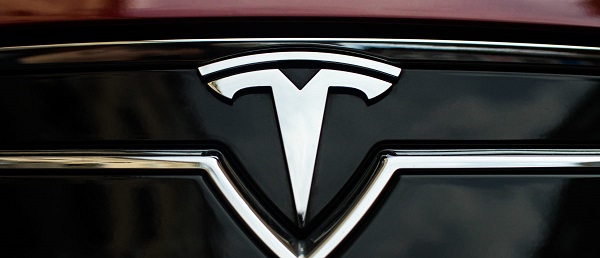

From the Daily Caller News Foundation
By Thomas English
A dark web doxxing website targeting Tesla owners and allies of Elon Musk appears to be compiled from hacked data originally stolen from a massive ParkMobile app breach in 2021, according to records obtained by a data privacy group.
The site, known as DogeQuest, first appeared in March and publishes names, home addresses, contact details and other personal information tied to Tesla drivers and DOGE staff. Marketed as a hub for anti-Musk “creative expressions of protest,” the platform has been linked to real-world vandalism and remains live on the dark web. Federal investigations into DogeQuest are already underway, the New York Post first reported.
“If you’re on the hunt for a Tesla to unleash your artistic flair with a spray can, just step outside — no map needed! At DOGEQUEST, we believe in empowering creative expressions of protest that you can execute from the comfort of your own home,” the surface-web DogeQuest site reads. “DOGEQUEST neither endorses nor condemns any actions.”

A screenshot of the DogeQuest surface website captured on April 3, 2025. (Captured by Thomas English/Daily Caller News Foundation)
ObscureIQ, a data privacy group, compiled a breakdown of the data — obtained by the Daily Caller News Foundation — and determined 98.2% of records used to populate the site matched individuals affected by the 2021 ParkMobile breach.
Encouraging destruction of Teslas throughout the country is extreme domestic terrorism!! https://t.co/8TCNIbrQxA
— Elon Musk (@elonmusk) March 18, 2025
DogeQuest originally appeared as a surface web doxxing hub, encouraging vandalism of Teslas and displaying names, addresses, contact details and, in some cases, employment information for roughly 1,700 individuals. The site used stolen ParkMobile records along with data purchased from brokers, flagging anyone who had a Tesla listed in their vehicle registration profile, according to ObscureIQ’s analysis.
The platform — now operating as “DogeQuest Unleashed” via a .onion dark web address — has also published personal details of high-value targets including senior military officials, federal employees and private sector executives in Silicon Valley. A spreadsheet reviewed by the Daily Caller News Foundation indicates several individuals targeted work areas like cybersecurity, defense contracting, public health and diplomatic policy. DOGE staff and their families appear prominently throughout the data.

A screenshot of DogeQuest’s surface website, captured on April 3, 2025. (Captured by Thomas English/Daily Caller News Foundation)
No other reporting has yet tied DogeQuest directly to the ParkMobile breach, which impacted over 21 million users in 2021. The company, which facilitates cashless parking across the U.S., quietly disclosed the breach in April of that year, admitting that “basic user information” had been accessed. ObscureIQ’s research shows that exposed data included email addresses, license plate numbers and phone numbers — enough to triangulate identity when paired with commercial data brokers.
The company agreed to a $32 million settlement to resolve a class-action lawsuit stemming from the data breach. The lawsuit alleged that ParkMobile failed to secure its Amazon Web Services cloud storage, allowing access to the data. Although payment data were reportedly not compromised, plaintiffs argued the exposed information still posed serious privacy risks — a claim now reinforced by its use in the DogeQuest doxxing campaign.
Despite federal attention, the site has proven difficult to keep offline, as the dark web mirror incorporates anonymized hosting methods, frustrating law enforcement takedown efforts.
The Department of Justice charged three suspects last week linked to physical attacks on Tesla vehicles, charging stations and dealerships across multiple states, though it has not publicly confirmed any link between those suspects and DogeQuest. Meanwhile, the FBI has acknowledged it is “actively working” on both the doxxing campaign and a parallel rise in swatting incidents affecting DOGE affiliates.
-

 2025 Federal Election1 day ago
2025 Federal Election1 day agoResearchers Link China’s Intelligence and Elite Influence Arms to B.C. Government, Liberal Party, and Trudeau-Appointed Senator
-

 2025 Federal Election2 days ago
2025 Federal Election2 days agoRCMP memo warns of Chinese interference on Canadian university campuses to affect election
-
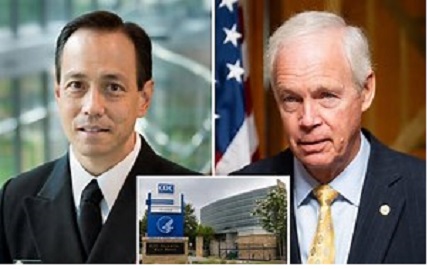
 COVID-1916 hours ago
COVID-1916 hours agoCDC Vaccine Safety Director May Have Destroyed Records, Says Sen. Ron Johnson
-

 COVID-191 day ago
COVID-191 day agoFauci, top COVID officials have criminal referral requests filed against them in 7 states
-
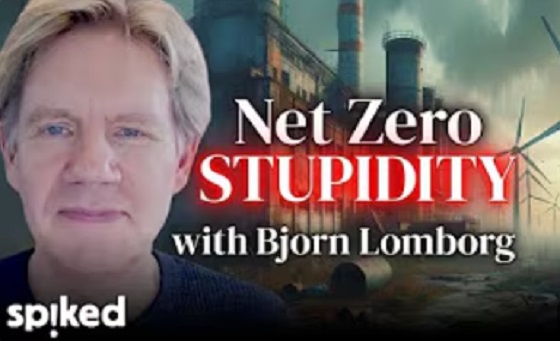
 Bjorn Lomborg1 day ago
Bjorn Lomborg1 day agoThe stupidity of Net Zero | Bjorn Lomborg on how climate alarmism leads to economic crisis
-
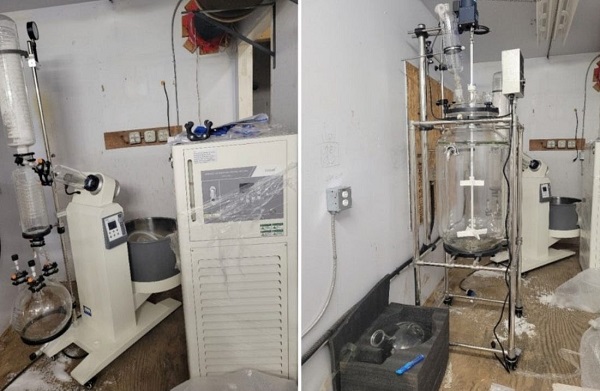
 Business15 hours ago
Business15 hours agoCanadian Police Raid Sophisticated Vancouver Fentanyl Labs, But Insist Millions of Pills Not Destined for U.S.
-

 Internet15 hours ago
Internet15 hours agoUS government gave $22 million to nonprofit teaching teens about sex toys: report
-
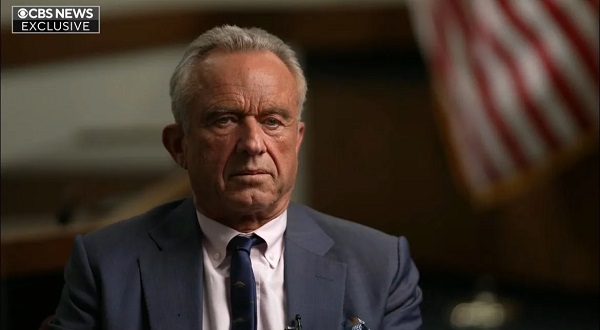
 Health1 day ago
Health1 day agoRFK Jr. Shuts Down Measles Scare in His First Network Interview as HHS Secretary









